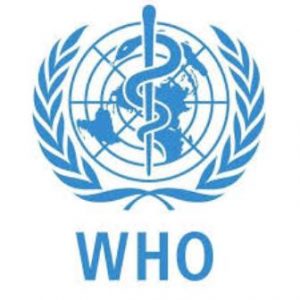
The predictions were somber and the doomsday predictions scary. The World Health Organization (WHO) warned African countries to “prepare for the worst”, while the UN Economic Commission for Africa (UNECA) had in April predicted: “anywhere between 300,000 and 3.3 million African people could lose their lives as a direct result of COVID-19.” Melinda Gates, co-chair of the Bill & Melinda Gates Foundation, in a CNN interview, said: “It’s going to be horrible in the developing world. And part of the reason you’re seeing that case numbers don’t look very bad is because they don’t have access to very many tests…Look at Ecuador. Look at what’s going on in Ecuador. They’re putting bodies out on the street. You’re going to see that in countries in Africa.”
All the projections pointed to a calamity of immense proportion that would hit Africa, leaving the continent worse off than other regions of the world. But months since Covid-19 struck, Africa with its notorious poor health infrastructure has recorded the least number of deaths. Latest WHO figures show Africa has the least number of cases (58,663) and deaths with (1,710) compared to the Americas with the highest numbers of cases (1,966,932) and deaths (118,799). This is closely followed by Europe with 1,874 075 cases and 166,121 deaths; Eastern Mediterranean with 326,568 cases 9,841 deaths; Western Pacific with 167,546 cases and 6,730 deaths; and South-East Asia with 134,531 cases and 4,351 deaths.
The most impacted countries worldwide as of May 17, 2020 showed the USA topping the chart with 1,486,757 cases and over 90,000 deaths; Russia, 281,752 cases and 2,631 deaths; UK, 244,995 cases and 34,716 deaths; Brazil, 241,080 cases and 16,122 deaths; Spain, 230,698 cases and 27,563 deaths; Italy, 225,435 cases and 31,908; France, 179,693 and 28,111 deaths; Germany, 176,369 cases and 7,962 deaths; Turkey, 149,435 cases and 4,140 deaths; and Iran, 120,198cases and 6,988 deaths.

In contrast, in Africa, South Africa is worst hit with 14,355 cases and 261 deaths. It is distantly followed by Algeria with 6,821 and 542 deaths. Others include: Ghana, 5,735 cases and 29 deaths; Nigeria, 5,621 cases and 176 deaths; Cameroon, 3,047 cases and 139 deaths; and Guinea with 2,658 cases and 16 deaths. While the argument that low testing indicates many African countries are yet to encounter the monster, the absence of mass deaths or hospitalizations seem to suggest something is ticking favorably for the continent.
Former INEC chairman and President, Bioresources Development Group, Prof. Maurice Iwu, agreed that Africans might have some form of protection from the coronavirus. “An issue is high humidity in most African countries, not just hot temperatures. Because of the density of the virus in tropical Africa, it cannot travel far. That means the recommendation of two meters of social distancing does not apply here because the virus cannot go far.” Iwu also raised the diet factor. “Our food has more antioxidants. We take a lot of phytomedicines. A lot of our diets contain zinc, vitamin C and other antioxidants. People take all these on a daily basis without even thinking about it,” he said.
There’s also the social exclusion of Sub-Saharan Africa. He explained: “We are excluded from so many socio-economic activities going on in the West. The number of people who travel from just Milan to New York on a daily basis far outnumbers the air travels in most parts of Africa. So, the socio-economic exclusion from the global picture has protected us from the quick spread of the virus through frequent business travels and inter-continental movements.”
Iwu further cited the issue of seasonal flu vaccines common in most European and American countries. “Most of these countries use flu vaccine. Once you take the flu vaccine and a new strain comes in, it will cause all the defence mechanisms to relax. This scenario makes most countries that use the flu vaccine more vulnerable to COVID-19,” he said.
Indeed, a recent study published by Chinese researchers from Beihang University (BUAA) and Institute of Economics, School of Social Sciences, Tsinghua University, demonstrated how high temperature and high humidity reduce the transmission of COVID-19. The study was published in the journal SSRN. The researchers explained: “The paper investigated the influence of air temperature and relative humidity on the transmission of COVID-19. After estimating the serial interval of COVID-19 from 105 hand-collected pairs of the virus carrier and the infected, we calculate the daily effective reproductive number, R, for each of all 100 Chinese cities with more than 40 cases. Using the daily R-values from January 21 to 23, 2020 as proxies of non-intervened transmission intensity, we find, under a linear regression framework, high temperature and high humidity significantly reduce the transmission of COVID-19, respectively. One-degree Celsius increase in temperature and one per cent increase in relative humidity lower R by 0.0225 and 0.0158, respectively.
“This result is consistent with the fact that the high temperature and high humidity reduce the transmission of influenza and Severe Acute Respiratory Syndrome (SARS). It indicates that the arrival of summer and rainy season in the northern hemisphere can effectively reduce the transmission of COVID-19.” Also, investigation revealed that most countries in malaria endemic regions/Sub-Saharan African nations have lower cases and deaths from COVID-19.
According the WHO Malaria Map and COVID-19 Map, most countries in Sub-Saharan Africa are endemic to malaria and are equally least affected by the coronavirus. In 2018, six countries accounted for more than half of all malaria cases worldwide: Nigeria (25%), the Democratic Republic of the Congo (12%), Uganda (5%), and Côte d’Ivoire, Mozambique and Niger (4% each). The WHO Malaria Map shows that more than 90% of countries worst hit by COVID-19 are not endemic to malaria including France, United States, United Kingdom, Canada, Spain, Italy, and Iran among others.
Unconfirmed reports suggest that no sickle cell anaemia patient has died of COVID-19 because they are invulnerable to malaria. Africa is endemic to sickle cell anaemia. In fact, more than 90% of all sickle cell anaemia cases exist on the continent. Another argument is that the BCG vaccination, which most Africans have, may be offering some protection.









